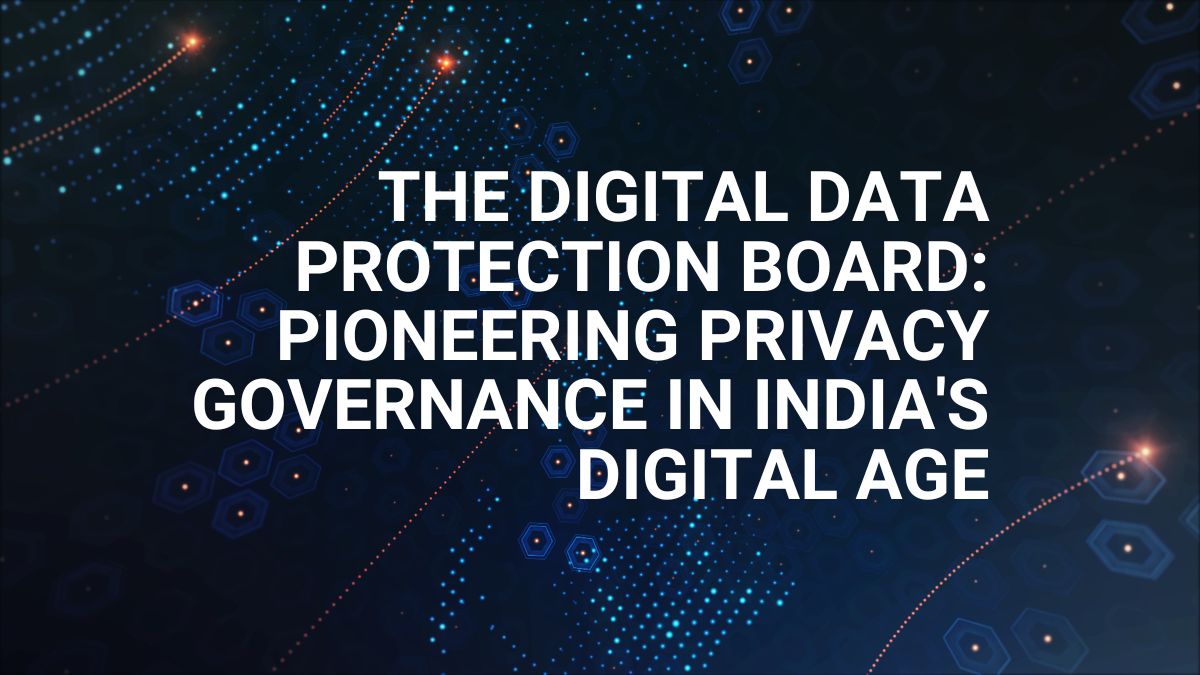In an era where personal data has become the new currency of the digital economy, India has taken a landmark step forward with the establishment of the Digital Data Protection Board under the Digital Personal Data Protection Rules, 2025. This innovative institution represents not just a regulatory body, but a fundamental reimagining of how privacy governance can function in the 21st century.
The Digital Revolution in Regulatory Oversight
Breaking New Ground with a Digital-First Approach
The Board’s conception as a “digital office” marks a departure from traditional regulatory frameworks. Unlike conventional government bodies that merely digitize existing processes, the Board has been designed from the ground up to operate in the digital realm. This approach reflects a deep understanding of the modern technological landscape while maintaining the gravitas and authority expected of a national regulatory body.
The digital-first stance manifests in several groundbreaking ways. Virtual proceedings and hearings leverage advanced telecommunication technologies, enabling efficient resolution of cases while maintaining procedural fairness. Despite its digital nature, the Board retains crucial traditional powers, including the authority to summon individuals and conduct examinations under oath, bridging the gap between digital efficiency and legal authority.
Technological Infrastructure and Security
The Board’s digital infrastructure has been architected with state-of-the-art security protocols and redundancy measures. This ensures not only the protection of sensitive information handled during proceedings but also demonstrates the Board’s commitment to practicing the very principles of data protection it seeks to enforce.
Leadership Excellence and Expertise
A Meritocratic Selection Process
The Rules demonstrate a commitment to excellence through a rigorous selection process for the Board’s leadership. The Search-cum-Selection Committee, headed by the Cabinet Secretary, ensures that only individuals with exceptional expertise in technology, data protection, and regulatory governance are considered for these crucial positions.
Competitive Remuneration for Top Talent
The prescribed remuneration structure reflects the high caliber of expertise sought. With monthly compensation of ₹4,50,000 for the Chairperson and ₹4,00,000 for Members, the Board positions itself to attract top talent from both public and private sectors. This investment in leadership quality underscores the government’s recognition of the critical role the Board will play in India’s digital future.
Operational Framework and Decision-Making
Democratic Governance with Efficient Execution
The Board’s operational framework strikes a careful balance between inclusive decision-making and operational efficiency. The quorum requirement of one-third membership ensures broad representation in decision-making while remaining practical for day-to-day operations.
Innovative Decision-Making Mechanisms
The incorporation of majority voting principles, complemented by the Chairperson’s casting vote, provides a clear framework for resolving complex issues. The provision for circular resolution in certain matters demonstrates a pragmatic approach to governance, allowing for swift action when necessary while maintaining democratic principles.
Impact and Future Implications
Setting Global Standards
The Board’s innovative structure could serve as a model for privacy regulation globally. Its digital-first approach, combined with robust traditional regulatory powers, creates a template for other nations grappling with similar challenges in the digital age.
Catalyzing Digital Transformation
Beyond its immediate regulatory role, the Board serves as a catalyst for digital transformation in governance. Its success could inspire similar innovations across other regulatory bodies, potentially transforming how government institutions operate in the digital age.
Challenges and Opportunities
Navigating Technological Evolution
The Board faces the ongoing challenge of keeping pace with rapidly evolving technology. Its digital-first nature positions it well to adapt, but maintaining this adaptability while ensuring consistent regulatory oversight will require constant vigilance and innovation.
Building Public Trust
As a new institution, the Board must work to establish public trust in its capabilities and commitment to protecting personal data. Transparency in operations and consistent enforcement of privacy rights will be crucial in building this trust.
Future Horizons
Expanding Regulatory Scope
As digital technologies continue to evolve, the Board’s role may need to expand beyond current parameters. The flexible digital framework positions it well to accommodate new areas of oversight as they emerge.
International Collaboration
The global nature of data flows suggests an increasing need for international cooperation. The Board’s digital infrastructure could facilitate seamless collaboration with similar institutions worldwide, potentially leading to more harmonized global privacy standards.
Conclusion
The Digital Data Protection Board represents more than just another regulatory institution; it embodies a forward-thinking approach to governance in the digital age. Its innovative structure, combining digital efficiency with traditional regulatory authority, creates a model that could influence privacy regulation globally. As India continues its digital transformation, the Board stands as a testament to the country’s commitment to protecting personal data while embracing technological innovation.
The success of this bold experiment in regulatory design will depend not only on the technical implementation but also on the commitment and expertise of its leadership and staff. As the digital landscape continues to evolve, the Board’s ability to adapt while maintaining its core mission of protecting personal data will be crucial. Its establishment marks not an endpoint but the beginning of a new chapter in the ongoing story of privacy protection in the digital age.
